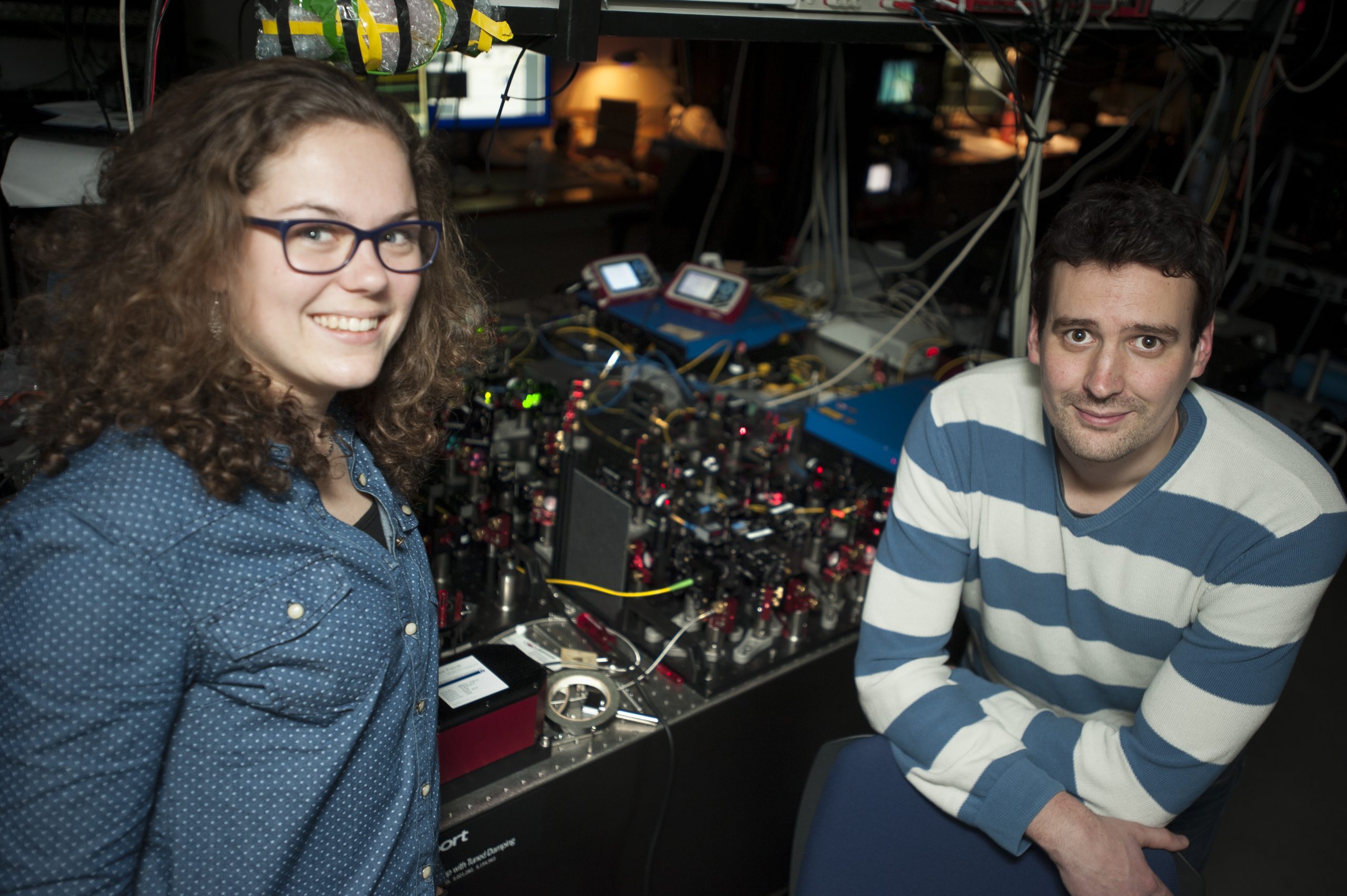Electron spins in diamond are susceptible to nearby nuclear spins. TU researchers turned this disadvantage into an asset by entanglement.
Diamond is an interesting material for quantumbits or qubits. Previously professor Ronald Hanson demonstrated that a number of qubits could be located and separately addressed on one piece of artificial diamond. The qubits themselves are actually ‘holes’ in the grid next to a nitrogen impurity. Never mind: it has an electron whose spin can be manipulated with laserpulses and set and read out at will. An additional benefit is that experiments with diamond-based qubits are usually performed at room temperature.
A drawback of the diamond-based qubits was their sensitivity to nuclear spins of adjacent carbon atoms. “Not all carbon atoms have spin”, Dr Tim Taminiau explains. He is a postdoc at the quantum transport group of the Kavli Institute at Applied Sciences and the lead author of a recent paper in Nature Nanotechnology. “Only the carbon-13 atoms have a nuclear spin, which is about 1 percent of the total. We’ve chosen two C-13 atoms at about half a nanometer distance from the nitrogen vacancy center.”
The spin momentum of the nuclear spin is about 3000 times smaller than the electron spin. Nonetheless, they do interact with the electron spin and they can disturb its fragile quantum state.
By entangling two adjacent nuclear spins with an electron spin, Taminiau and colleagues turned the potential jammers into a pair of crutches that support the electron spin instead of ruffling it.
It’s a clever trick that seems to rub the no-cloning theorem of quantum mechanics the wrong way (which forbids the creation of identical copies of an arbitrary unknown quantum state). “We haven’t made copies”, says Taminiau. “The qubits are just entangled, which is another way of reaching redundancy without copying the information.” It may seem a subtle difference at best, but the researchers got away with it.
Based on that redundancy, the researchers constructed an quantum error correction protocol, which is quite cool since it can correct spontaneous quantum state collapses without outside awareness. PhD student and co-author Julia Cramer MSc. explains how it works. The error-correction is based on the comparison of the quantum states of the three entangled qubits. If they’re not all equal (never mind the state they’re in) you assume the odd qubit has lost its quantum state and has to be reset into the state of the other two.
Cramer explains: “We’ve used an algorithm that checks the qubits and repairs the errors. It’s doing the same thing over and over, hustling the qubits and resetting them if needed. But we at the outside cannot check what it’s doing and we cannot see whether it corrects an error or not.”
It is possible of course that the auto-correction itself goes awry. Taminiau claims the error-correction is currently right in 85 percent of the cases. In addition, there is a small chance that the odd qubit at the comparison is actually in the right quantum state and the other two were corrupted. In that case the auto-correction will go wrong.
Next steps in the direction of a functioning quantum computer will entail better stability of the qubits and an improved error-correction mechanism, says Taminiau. “If the operations of the qubits themselves get better, the number of errors will decrease and error-correction will be able to win.” For more advanced correction schemes, run by (classic) computers alongside the qubits, 99 percent accuracy is required for the error correction to come out on top.
Theory states that once qubit registers (as ensembles of entangled qubits are called) are stable enough, you can progress toward large-scale applications without the need for an unmanageable large number of correction qubits.
Now that they have developed the techniques for control and auto-correction of qubits, Taminiau and colleagues are planning to put this scaling theory to the test with cryogenic diamond-based qubits and improved error-correction.
→ T.H. Taminiau, J. Cramer, T. van der Sar, V.V. Dobrovitski and R. Hanson, Universal control and error correction in multi-qubit spin registers in diamond, Nature Nanotechnology, February 2nd 2014.
Related articles:
Electron spin shielded by microwaves, September 2010
Quantum calculations in diamond, September 2011
First bits of quantum ICT, May 2013



Comments are closed.